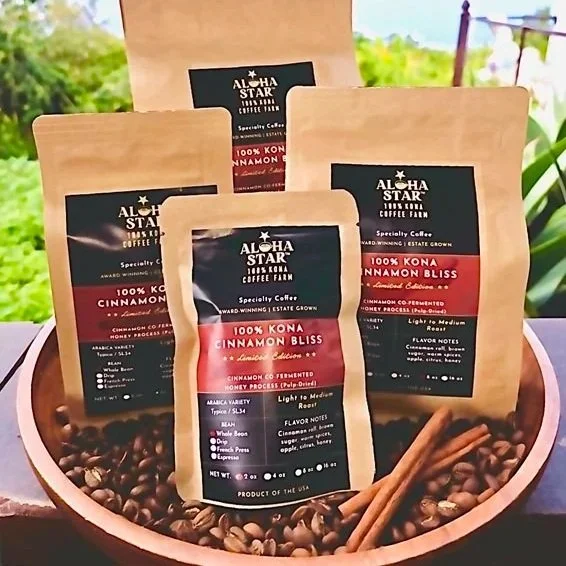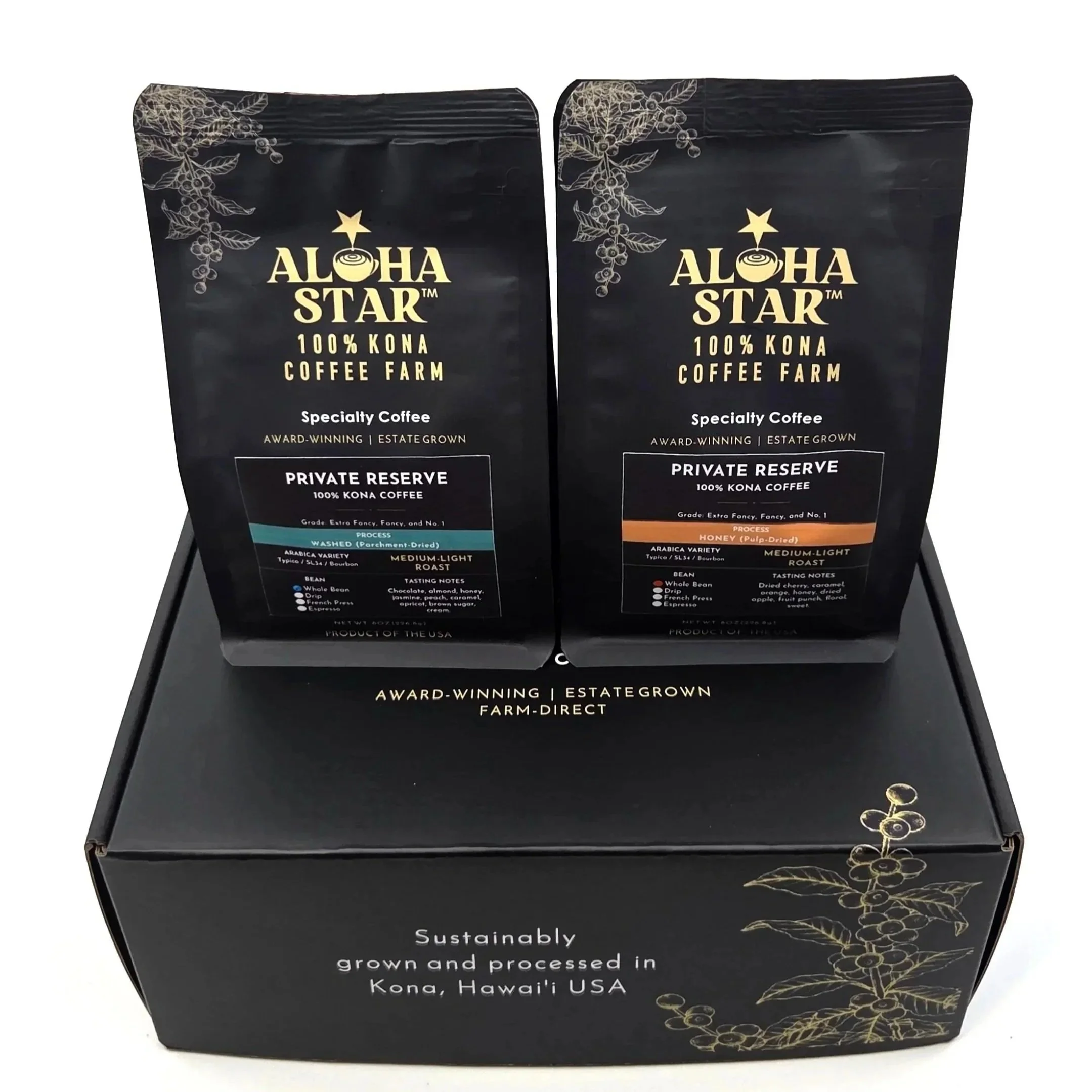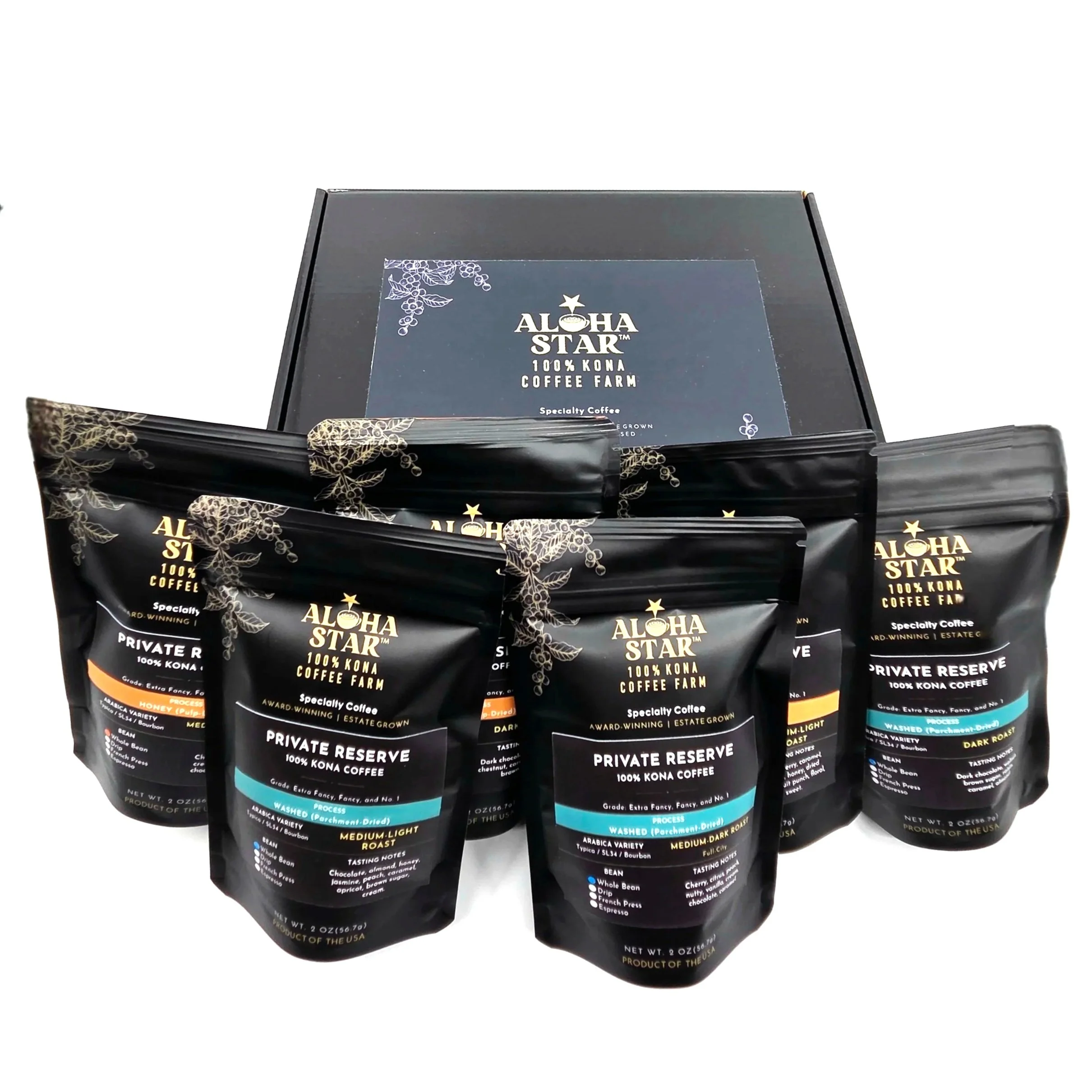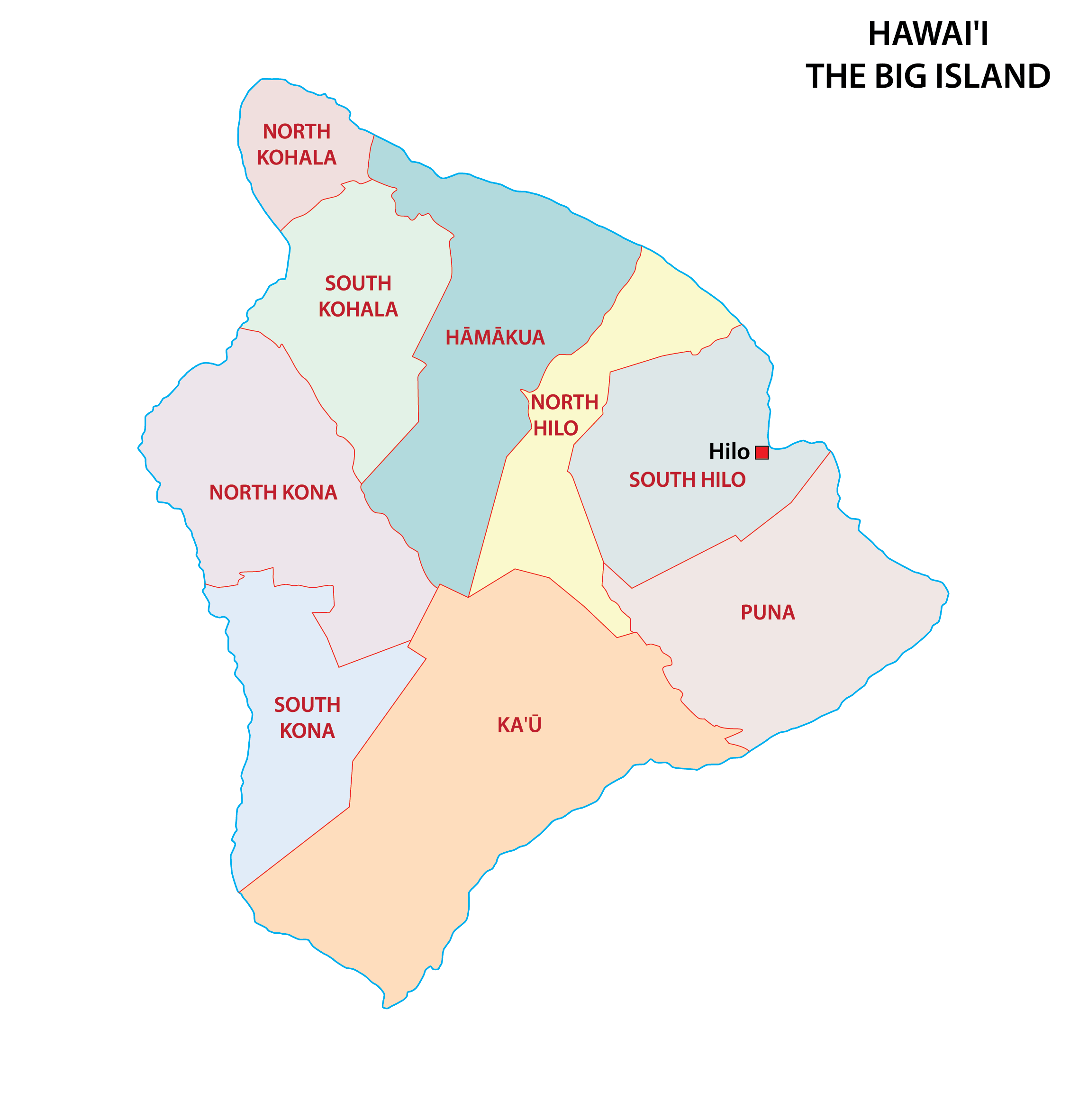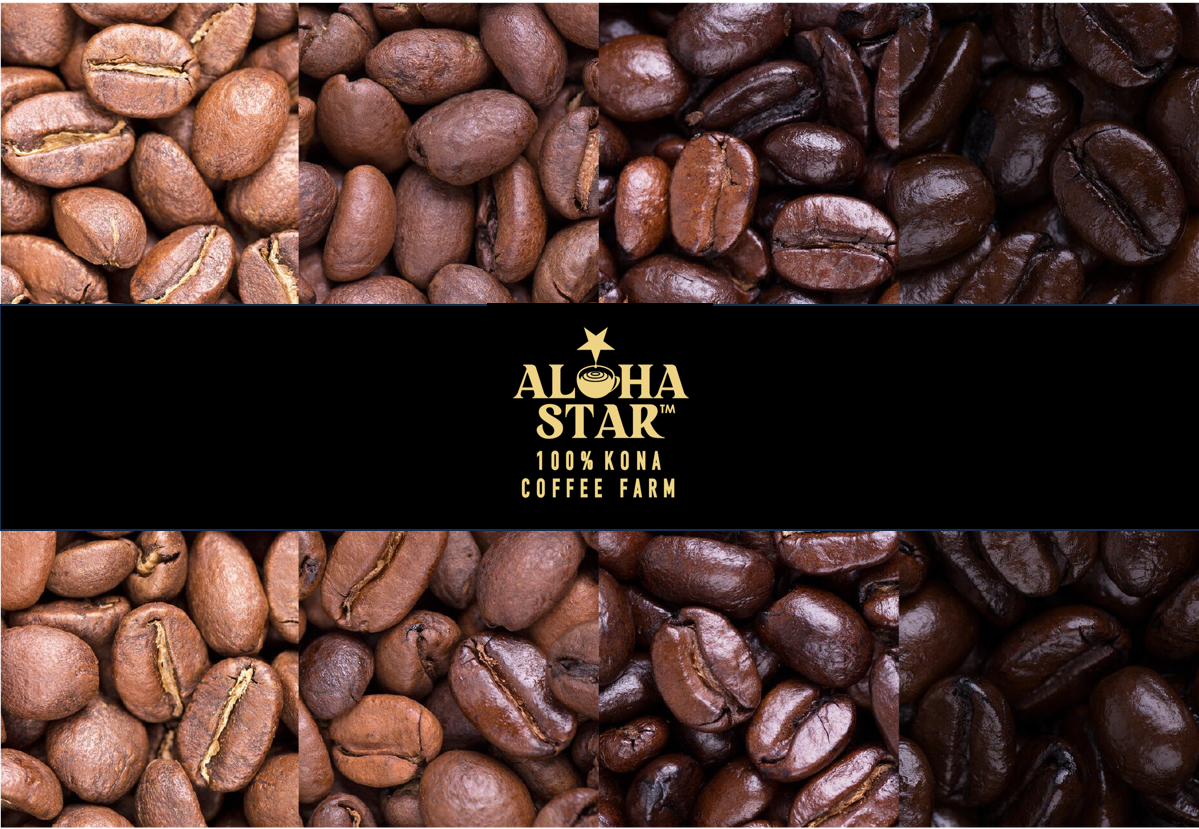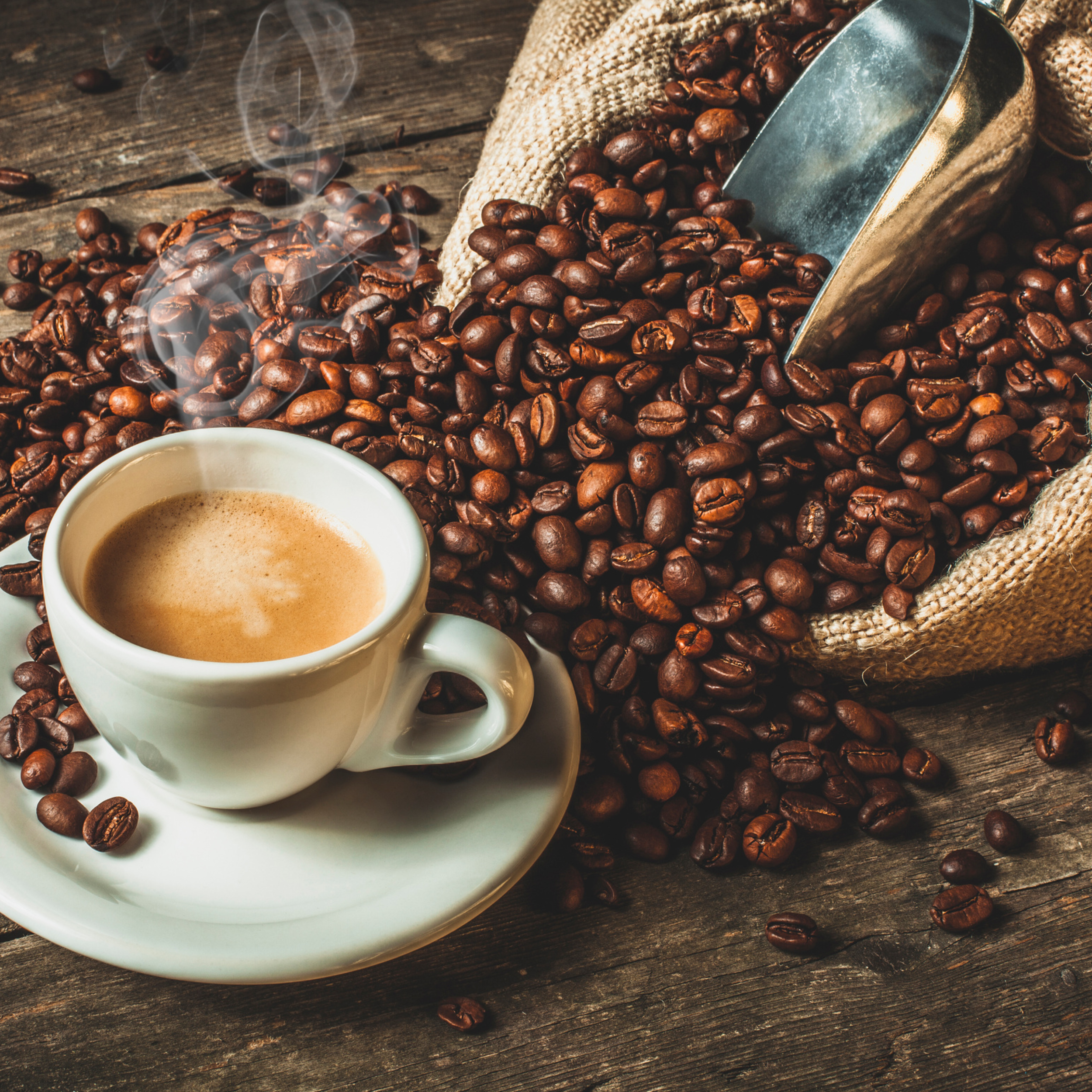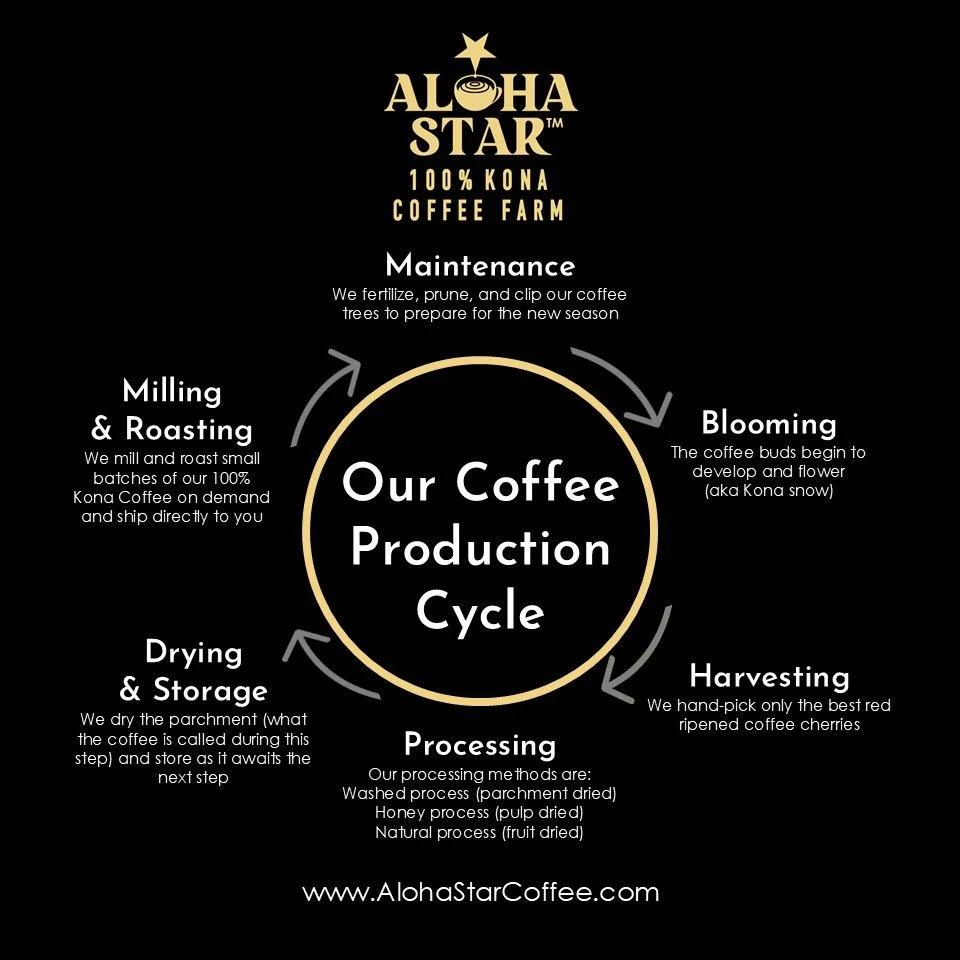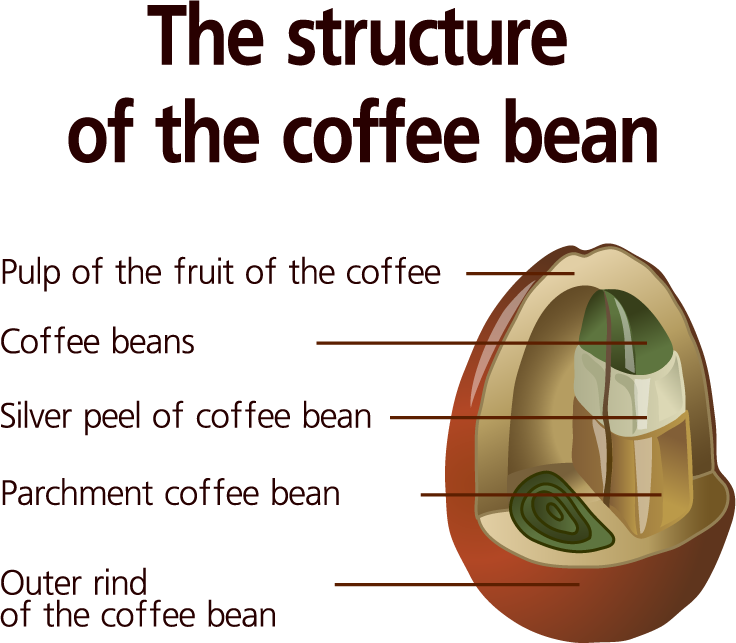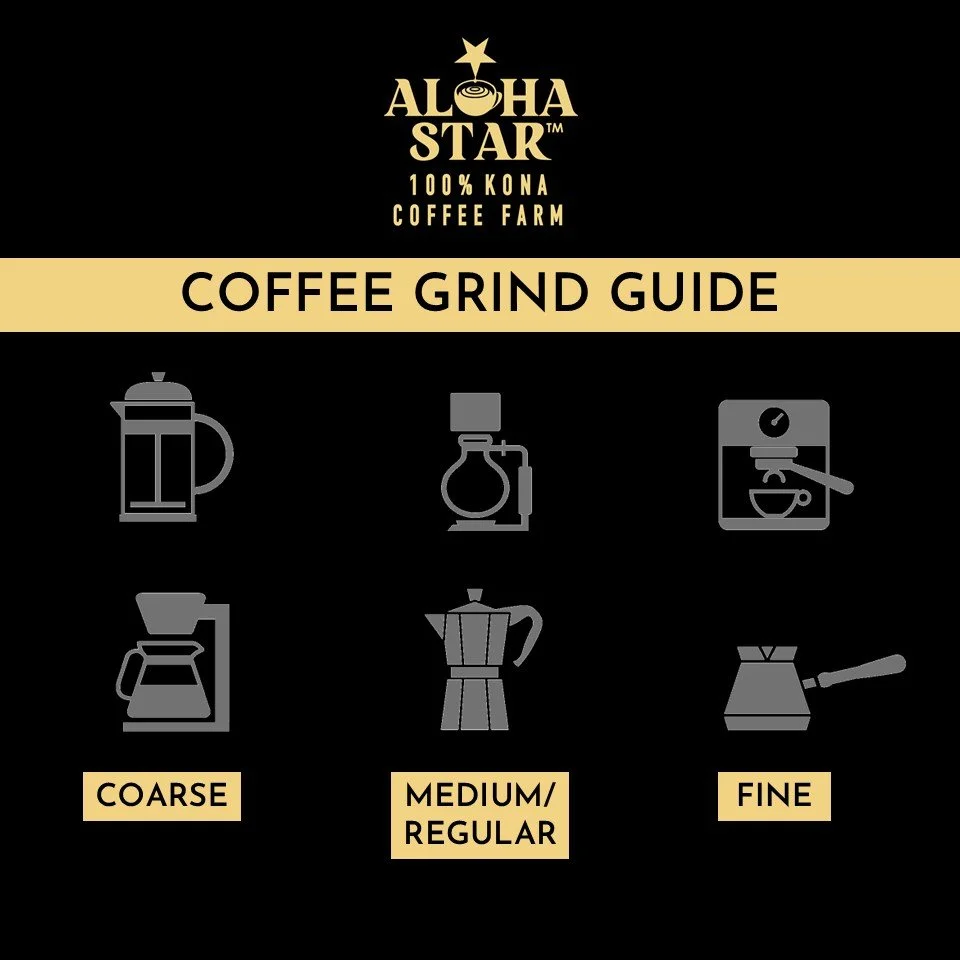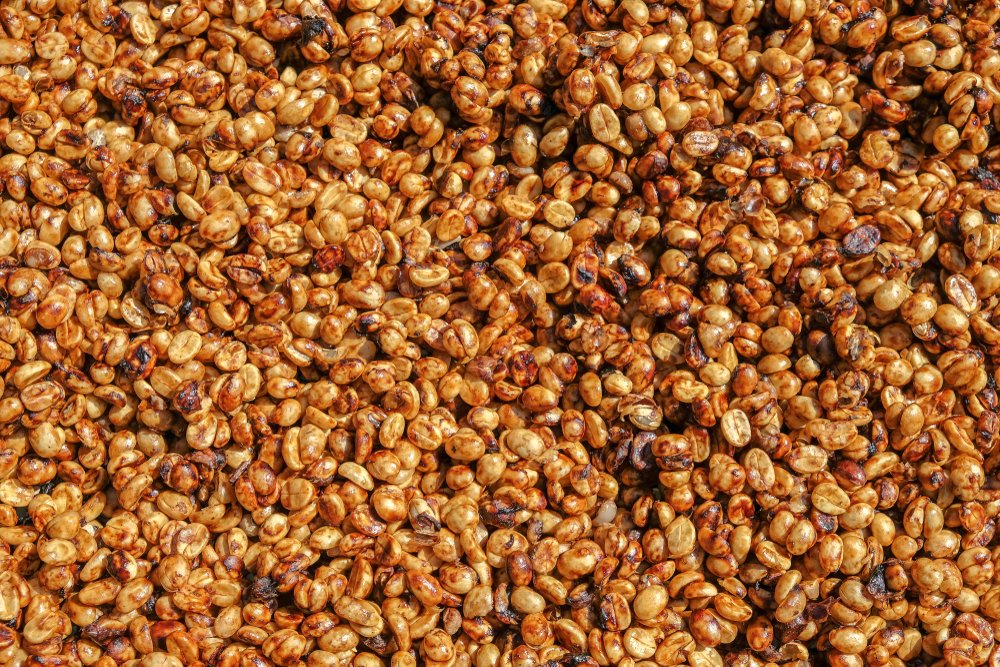The Aloha Star 100% Kona Coffee Holiday Gifting Guide
The holidays are the perfect time to wrap your loved ones in warmth, comfort, and a taste of something truly special. This year, we’re celebrating the season with a curated gifting guide featuring our Aloha Star 100% Kona coffee farm products—handcrafted treasures grown on the rich volcanic slopes of Hawaiʻi and shared with the spirit of aloha.
Whether you’re shopping for the coffee aficionado, the adventurous sipper, or someone who simply appreciates thoughtful, high-quality gifts, we’ve got something that will make their season extra bright.
Holiday Edition Cinnamon Bliss Coffee
This holiday-exclusive edition celebrates the warm, aromatic flavors of the season. Crafted with a custom cinnamon co-fermented coffee, it combines sweet spice and rich coffee notes for a cup that feels like pure holiday cheer, featuring flavors of cinnamon roll, brown sugar, warm spices, apple, citrus, and honey.
Our 100% Kona Coffee Bags
Our signature 100% Kona coffee is a gift that never fails to impress. Smooth, rich, and naturally sweet, each roast highlights the unique character of our farm’s beans. Presented in beautifully designed packaging and several size options, these bags make the perfect stocking stuffer or centerpiece gift for any coffee lover.
Kona Coffee Samplers
Share the joy of flavor discovery with our 100% Kona coffee sampler sets, showcasing a variety of our different processing methods and roasts. Each roast level and processing method brings its own unique tasting experience. It’s a fun and delicious way for friends and family to find their new favorite cup of coffee.
For a gift that truly keeps on giving, our Aloha Star coffee subscriptions automatically deliver freshly roasted 100% Kona coffee right to their door, with the same benefits and discounts of our regular Coffee Club subscriptions. Choose from various roast levels, sizes, and frequency options (3,6, or 9 month) to match their coffee routine. It is convenience, quality, and joy delivered in every shipment.
More Ways to Share the Aloha
If you’re looking to go beyond the traditional cup, we also offer two unique offerings that make unforgettable gifts:
Cascara Tea – Made from the dried fruit of the coffee cherry, our cascara tea is lightly sweet, smooth, and perfect for cozy winter sipping.
e-gift cards —Not sure what to get for the coffee lover in your life? Our e-gift cards make the perfect choice.
Green coffee (unroasted)_For the coffee aficionado who loves roasting at home, we offer our award-winning 100% Kona Unroasted Green Coffee Private Reserve, available in the classic washed process or the rich and unique honey (pulp-dried) process.
This holiday season, surprise your friends and family with a gift that warms the heart and wakes up the senses. Aloha Star 100% Kona Coffee is more than just a delicious drink—it’s a moment of aloha, of authentic specialty Kona coffee sent straight from our farm to their doorstep.
Coffee first, aloha always!
Happy Holidays, from our family to you!
Celebrating the Kona Coffee Cultural Festival: Community, Coffee, and Aloha
What an incredible weekend at the 2025 Kona Coffee Cultural Festival's Holualoa Village Coffee & Art Stroll, celebrated on Sunday, November 9th! This beloved annual event is always a highlight of the year, bringing together coffee farmers, roasters, and enthusiasts to celebrate the heart of Hawaii’s coffee heritage. The turnout was amazing, the energy was high, and we were so proud and grateful to be part of a community that continues to keep Kona’s coffee legacy thriving.
As members of the 100% Kona coffee farming community, this festival means so much to us. It’s a celebration of tradition, craftsmanship, and connection. It’s also a reminder of the hard work and aloha that goes into every single coffee bean. Meeting festival-goers, sharing our story, and representing the larger network of local farmers filled us with pride and gratitude.
This year there was even more to celebrate, as we were honored to win 2nd place in the People’s Choice Awards at the 26th Annual Holualoa Village Coffee & Art Stroll! This award is voted by attendees for their favorite coffees of the day, making this recognition especially meaningful. Knowing that so many visitors enjoyed our coffee truly fills us with joy and appreciation. We are humbled by the love and support received from the public, since this is the 3rd consecutive year that our farm has ranked in the top three (1st place in 2023 and 2024).
Our 100% Kona Cinnamon Bliss Coffee and 100% Kona Cascara Coffee Cherry Tea were definite crowd favorites! Festival visitors loved the warm, sweet, spice of the cinnamon infused- honey process that captures the comforting essence of the holidays in every sip. Our cascara tea, made from dried coffee cherry husks, also sparked plenty of curiosity and excitement. Many were surprised to learn that this naturally sweet, lightly fruity tea is not only delicious but also a sustainable way to enjoy more of the coffee plant’s goodness. Hearing the positive feedback and seeing so many smiling faces made all the hard work worthwhile.
Events like this remind us why we do what we do; to share our love of 100% Kona coffee, celebrate community, and support local growers who keep this island’s coffee tradition alive. To everyone who stopped by our booth, chatted with our team, or simply shared a smile, we send our most heartfelt mahalo!
Shop Kona Coffee Cultural Festival Favorites
A Limited-Edition Delight: Our 100% Kona Cinnamon Bliss Coffee is here
There’s something magical about the holidays in Hawaii. The warm trade winds, golden sunsets, and fragrant blooms create the perfect backdrop for savoring a cup of truly exceptional coffee. This season, we’re thrilled to introduce a limited edition offering that captures the cozy flavors of the holiday season while showcasing the unmatched quality of our100% Kona coffee. To highlight the warm, aromatic notes of the season, we crafted a custom cinnamon coffee that strikes a perfect balance between sweet spice and rich coffee character.
Our 100% Kona Cinnamon Bliss coffee is a special creation by our co-founder Armando, inspired by the traditional Mexican coffee, “Cafe de Olla” or “Cafe con Canela.” Armando started perfecting his recipe several years ago and shared small batches with family and friends. This year we decided to share it as an Aloha Star limited edition micro-batch coffee.
We processed this coffee with a cinnamon co-fermented honey process (pulp-dried). 100% Kona Cinnamon Bliss is created by fermenting the coffee cherries with cinnamon bark for 24 hours before having their red skin removed. Afterwards, the beans are sun-dried with the coffee mucilage intact to draw out the bean’s natural hints of warm spice and brown sugar. The result is a cup that’s subtly sweet, with cinnamon notes. It’s an aromatic brew that feels comforting in every sip.
As a specialty coffee, 100% Kona Cinnamon Bliss won’t be here for long. This cinnamon edition is available only for a short time and in very limited quantities, making it the perfect treat for collectors, coffee connoisseurs, or anyone seeking a one-of-a-kind coffee experience.
Whether you brew it as a morning pour-over or just using your regular drip coffee maker, as a French press for brunch, or as an after-dinner espresso, our 100% Kona Cinnamon Bliss coffee elevates every cup into a seasonal celebration. Pair it with warm pastries, holiday desserts, or simply enjoy it on its own to fully appreciate its rich complexity.
This fall, invite the flavors of Hawaii into your home. Our limited edition, micro-batch, estate grown 100% Kona Cinnamon Bliss coffee is more than a beverage—it’s a taste of the islands, a moment of comfort, and a reminder that the best things in life are worth savoring.
What is Kona coffee? Are you Drinking Real Kona coffee?
What is Kona Coffee?
The term Kona coffee applies only to the coffee grown within the Kona District (North and South Kona) located on the West side of Hawaii island (Big Island). The Big Island is the biggest of the eight islands that form the state of Hawaii. Currently, coffee is grown on five Hawaiian Islands (Kauai, Oahu, Maui, Molokai, and Hawaii Island). Here on the Big Island, additional to Kona, coffee is also grown in the districts of Ka’u (Southeast), Puna in the Northeast, and Hamakua in the Northwest.
Coffee that is grown elsewhere in Hawai'i or imported from other countries, cannot be called Kona coffee. Furthermore, coffee that is mixed with coffees from other producing regions or countries, cannot be called 100% Kona Coffee (more details below).
The Importance of the Kona Coffee Location
The Kona District is located on the West slopes of the Hualalai and Mauna Loa volcanoes, on Hawaii island (Big Island). The Kona District is divided into the North Kona and South Kona districts. This region, which covers almost two-thirds of the entire West side of Hawai’i island, is home to the famous “Kona Coffee Belt”. With altitudes ranging from 500 to 3200 feet above sea levels, the Kona District includes the communities of Makalei (most northern section, bordering the South Kohala District), Holualua, Honalo, Kainaliu, Kealakekua, Captain Cook, Honaunau-Napoopoo, Hookena, Papa Bay, Honomalino Acres, and other communities located in the most southern section of this district.
The map of Hawaii island (Big Island of Hawaii) above shows eight districts, including the North Kona and South Kona districts. The west side of the island, is where Kona coffee is grown.
During the last 15-20 years, newer Kona coffee farms have been developed in South Kona, including our two Estates, as well as other ones located even farther South, but still within South Kona. These farms sometimes are not included in the “Kona Coffee Belt” maps found online. The fact is all coffee grown within the boundaries of the Kona District (North Kona and South Kona) is 100% Kona coffee.
What is the taste profile of Kona coffee?
The volcanic soil in these mountainous places is rich in nitrates, phosphates, iron, and manganese, which promotes healthy plant growth. This area is characterized by:
Fields with altitudes from 500 of up to 3,200 feet.
Average rainfall of 60+ inches per year.
Slightly acidic, well-drained volcanic soil.
Excellent drainage conditions. The rainwater runs down the slopes, coffee crops will not flood.
Mild temperature swings from day to night (85°F day average, 60°F night average).
Sunny mornings and cloudy afternoons.
Wind-protected western slopes (trade winds usually blow from East to West).
The cycle of bright sunny mornings, cloudy, wet afternoons, and moderate evenings create a perfect growing environment for Kona coffee trees to mature slowly and prosper, producing sweet-tasting, flavorful beans.
A Brief History of Kona Coffee
The story of Kona began in 1823, when the Hawaiian King Kamehameha II traveled to England with Oahu's governor, Chief Boki. Unfortunately, the king contracted measles on his trip and died before his return to the Big Island. Chief Boki visited some coffee houses while he was in England, and he saw the potential for growing coffee in Hawaii. He made an arrangement with an English agriculturist named John Wilkinson, to come to Hawaii with him to grow and cultivate coffee and sugar on the Manoa Valley in Honolulu (island of Oahu).
On their way back home, Chief Boki stopped in Rio de Janeiro, Brazil, and purchased some coffee seedlings to be planted by Wilkison at the Manoa Valley field. They arrived in Hawaii in May 1825, and the coffee orchard was successfully established.
Then, in 1828, Samuel Reverend Ruggles brought some plants from that Manoa Valley coffee orchard and planted them in the area of Napo’opo’o, in South Kona (here in Hawaii island) where it prospered, thanks to the favorable growing conditions.
Coffee was also planted in other parts of the Hawaiian Islands, including Oahu, Maui and Kauai. From 1850 to the 1880s, the Kona coffee industry grew significantly, but the 1899 world coffee market crash caused plantation owners to lease land to their workers. Japanese immigrants were predominantly Kona coffee farmers (originally brought to work on sugarcane plantations) and they worked their leased land parcels of between 5 and 12 acres as family concerns, producing quality coffee crops. This is true today, where many Kona coffee farmers are fifth-generation descendants doing the same work. The tradition of running family farms has continued throughout Kona. The Japanese-origin families have been joined by Filipinos, mainland Americans, Europeans, and Latino/Hispanic families, like us.
Kona coffee has experienced periods of expansion and contraction in response to major social and political events. Throughout it all, Kona coffee varieties have quietly evolved and improved, with both processing and brewing methods refined over the years. As of today, there are approximately 900 Kona coffee farms, and most of them are family-owned and operated. Many Kona coffee farms offer farm tours, coffee tastings, and roasting sessions to the visitors.
What is Specialty Coffee?
Following the Specialty Coffee Association (SCA) standards and overall, internationally accepted requirements, specialty coffee is defined as any coffee that, when graded, complies with these standards:
On a 350g (12oz) sample of green coffee beans (unroasted) inspection: there is zero (0) primary defects, and less than five (5) secondary defects on a 350g sample.
During the cupping (coffee tasting done after roasting, grinding and brewing the sample): It scores 80 points or above, on a 100-points scale.
Coffee Cupping Quality scores:
From 80 to 100 points = specialty coffee
Score lower than 80 points = commercial-grade coffee (non- specialty coffee).
SCA quality standards for specialty grade coffee beans
SCA Coffee Taster's Flavor Wheel guide for coffee cupping (tasting of brewed coffee samples)
Is all Kona Coffee specialty-grade coffee?
The answer is no. Coffees can be 100% Kona and not reach the standard to be ranked as specialty-grade. A big majority of Kona coffee producers comply only with the HDOA (Hawaii Department of Agriculture) Standards for Kona coffee. Only a reduced group of farmers follow the Specialty Coffee Association (SCA) standards. However, every year the number is increasing, which is great for the Kona coffee consumers, and overall, for all coffees produced in the state of Hawaii.
How much 100% Kona coffee is produced each year?
Between 2021 and 2022, an estimated 1.9 million lbs. of unroasted coffee beans were produced. However, there is a large amount of the Kona coffee being blended with other coffee beans, resulting in the decline. There is an average of about 20 million pounds of coffee sold each year with the label of Kona Coffee, though much of it is more aptly described as “Kona Coffee Blend”, containing as low 10% Kona coffee.
Counterfeit Kona coffee generally retails at lower prices, usually found at big retail brick and online stores, at some farmers markets, or even street vendors. If you are paying $20 -25 dollars or less for one pound of “100% Kona Coffee”, there is a big possibility that you are not getting authentic, real 100% Kona coffee, you might be getting a lower grade (X-3 or “Off-grade” beans), which are not allowed to be labeled as “Kona”, according to HDOA standards. With major corporations and significant money involved, local Kona coffee farmers and organizations have spent over a decade fighting to change the laws and end this deceptive practice—a battle that continues today.
How does Kona coffee differ from other types of coffee?
Its geographic location (farther from the Equator), the weather conditions and rich volcanic soil benefits Kona coffee beans. Our 100% Kona coffee is meticulously harvested, processed, dried, stored, milled and roasted in small batches, to ensure quality, freshness, flavor, aroma. The ultimate product is an outstanding, delicate coffee full of flavor and scent, artisan-roasted in small batches, “on demand” as orders arrive.
How to identify counterfeit Kona coffee?
Before buying Kona Coffee, it’s always good to consider the following tips before completing your purchase:
Always read the label. Make sure that it says 100% Kona coffee.
Many brands of coffee have the word "Kona" in the name but are not Kona. Many are a "Kona Blend". A Kona blend can contain as little as 10% Kona beans or even none. When purchasing, consider the following points:
Purchase farm-direct brands.
Check the beans' quality grade. Preferably purchase Estate-grown and specialty-grade beans.
Purchase whole beans, in order to identify the quality of the coffee. This is especially important if you are purchasing Peaberry beans.
Stay away from flavored coffee, especially if it is ground. You might be (we cannot say it’s always the case) getting lower-quality beans.
2. Check the size and weight of the bag.
Be aware that some packages look to be the same size, but some contain only 7 ounces, or even 6.5 ounces instead of 8 ounces; or 12, 14 ounces instead of 1LB. We always over fill our bags slightly (and do not include bag weight) in order to make sure that you receive the amount of coffee that you ordered. Every bit of coffee counts and we want to make sure you get it all, every time!
3. Look for Kona coffee that is fresh.
Without a doubt, any coffee is best when consumed freshly roasted. 100% Kona coffee is a favorite of many and is considered an opulent example in the coffee world. Buying from a reputable, well-known source is the most reliable way to get the freshest beans. You are paying for high quality product, so you expect it to be fresh. In order to ensure freshness, we recommend you:
Purchase coffee that is roasted to order, and in small batches.
Purchase packages with the one-way valve (degassing valve) that let the gasses from roasting escape, without letting in air that will make it stale quickly.
Look for bags that have solid sides. We suggest you avoid packages with transparent panels, because light affects the coffee freshness.
Purchase whole beans, if possible, which keeps freshness longer than ground coffee.
Is Kona Coffee a seasonal product?
Kona coffee usually begins blooming between February and March. The small white flowers known as "Kona snow" cover the trees. Small green berries appear in April. It takes about 7 months for the coffee cherries to be fully developed. The harvest season begins by late July or the beginning of August. The red fruit, called "cherry" because it resembles a cherry, starts to ripen for picking. Not all cherries ripe at the same time, which is the reason why each tree is hand-picked several times (five to six rounds, with an average of two to three weeks between pickings).
Between August and January, depending on the coffee variety and growing conditions, each coffee tree provides around 15 pounds of cherry, which results in about two pounds of roasted coffee.
The Kona Coffee harvest can be preserved. There are several steps that are performed after each round of coffee picking and before the coffee is ready to be roasted. There are different methods for processing coffee, being the Washed or parchment-dried the most commonly employed to process Kona coffee. However, in recent years, the Pulp-dried or Honey process and the Fruit-dried or Natural process, have gained popularity to process Kona coffee, following the trend in other coffee producing countries/regions and the increased demand.
Is Kona coffee healthy?
Based on several studies, caffeine intake can significantly help in boosting your metabolism. Having this beverage regularly can help your body quickly transform food into energy. Also, coffee can help to reduce inflammation and support heart health. It is also packed with nutrients and antioxidants. It contains nutrients including Vitamins B2, B3, and B5, potassium, and manganese that provide many health benefits.
Coffee from Hawaii, particularly Kona, has always held a particular fascination in the minds of American consumers. The properties that Hawaii islands are issued due to cultural qualities, social expectations. There is always an exotic quality to the products from Hawaii that are passed on to all categories.
Is Kona coffee high in caffeine?
You may have heard that Kona coffee has a high caffeine content, which is technically accurate. On average, Kona coffee beans have a caffeine content between 1.20% to 1.32%. By contrast, many mass-produced coffees from other regions have a caffeine content closer to 1.1%.
REFERENCES
Kona Coffee History | Kona Coffee Cultural Festival 2023 (konacoffeefest.com)
https://www.hawaiicoffeeassoc.org/resources/Documents/DOA-HICoffeeAssoc-Booklet.v4_print.pdf
Kona Coffee: Our Definitive Guide (History, Background and coffee Facts) (lovebigisland.com)
Kona coffee - Wikipedia
Book: A cup of Aloha. The Kona Coffee Epic, by Gerald Y. Kinro. 2003 University of Hawaii Press.
Guide To Coffee Roast Levels
In general, coffee roasting terms are not very precise. Usually, coffee roast types (levels) are identified by their color and the temperature reached during the roasting process. There are four main roast levels : light, medium, medium-dark and dark. Although some coffees are naturally darker or lighter than others, these are convenient ways to categorize roasts.
When purchasing your Kona coffee, you should expect different characteristics from each roast type (level):
Light Roast
Retain Most of the original coffee characteristics.
Have a light brown, tan, color and lack of oil on the roasted beans. They have the highest acidity and are the brightest of the three roast levels.
Are sometimes called Half City, Light City, New England, or Cinnamon roasts.
Beans reach an internal temperature of 180°C – 205°C (356°F – 401°F). At or around 205°C, the beans pop or crack and expand in size. This is known as the “first crack”. So, a light roast generally means a coffee that has not been roasted beyond the "first crack".
Medium Roast
Roasted just past the "first crack", the beans have a darker brown color than a light roast and will look richer. Some of the coffee’s oils may be visible on the beans.
At this roast level, the coffee’s qualities begin to give way to the roast’s flavors and aromas, creating a balance between acidity and body. You’ll still be able to taste the original coffee, but the brightness of the beans will be complemented with the fuller body that is introduced by the roasting process.
Reaches temperatures that range between 210 °C (410 °F) called American, and 219 °C (426 °F) called City. Are also known as Breakfast, or Regular roasts.
Medium-Dark Roast (Full City)
Roasted just before the "second crack", the beans are a darker brown color than the medium roasts, and have an oily surface. It gives you a strong, rich flavor, without being too bitter.
225 °C (437 °F), Full City Roast.
Some coffee roasters consider this roast a dark-roast, but medium-dark it is an oficial classification, separated from the dark roasts.
Dark Roast
Roasted until reaching the "second crack", the beans are a dark brown color with an oily surface. It gives you a strong, rich flavor; the darker the roast, it has less acidity.
The brightness of light roasts is replaced with body in dark roasts.
Historically, dark roasts have been popular in Europe, where are named as Continental, Italian, French, and Spanish roasts. Espresso roasts are also dark roasts.
Reaches temperatures that range as follows: 230 °C (446 °F), Vienna Roast; 240 °C (464 °F), French Roast; 245 °C (473 °F), Italian Roast.
Note: First and second "crack" are audible, physical cracks, that sound like hearing popcorn popping, as a result of expansion of the coffee beans during the roasting process, when its moisture begins to evaporate. This moisture forms steam and pressure, that forces the coffee beans to "crack" while expanding.
Which coffee Roast Is Better?
Roast level is largely a personal preference, as each level produces different qualities in the coffee. It is all about the taste, the flavor, the aroma, and the brewing method for brewing your Kona coffee. Knowing the features of light, medium or dark roasts, can help you identify the roast level(s) that you might like. Lighter roasts are greatly recommended for pour-over, while medium-dark and dark roasts are widely used for espresso.
Take a look at our Kona Coffee Brewing Tips for more details about other key factors to consider before brewing your favorite Kona coffee, in addition to the roast level and brewing method chosen.
From Kona Coffee Farm to Cup of Coffee: Our Quality-Oriented and Sustainable Production Cycle
Have you ever wondered how Kona coffee is made? We frequently discuss the roast profile, growing locations, tasting notes, and so on, but we rarely get a true glimpse into each step of the growing process. Our 100% Kona coffee is grown exclusively on our farm. As an Estate farm, we carefully manage all stages of the production cycle to ensure that we comply with the highest quality standards for specialty coffee, while employing sustainably and eco-friendly practices: from seedling, growing, harvesting, processing, drying, milling, grading/sorting, and finally roasting. Follow along as we trace the origins of the World's most famous coffee, from seedling to roasting to a steaming mug.
What is Kona coffee?
Kona Coffee is coffee grown only within the Kona District, located on the Big Island of Hawaii's west side, on the western slopes of the Hualalai volcano (Central and North Kona) and the Mauna Loa volcano (South Kona). The volcanic ecosystem provides a rich volcanic soil with all of the nutrients necessary to grow the coffee beans, as well as a very unique microclimate that aids the growth, providing a consistent morning sun along with the afternoon rain throughout the year, making this location ideal for growing high quality coffee.
How Kona Coffee Is Made: Seedling to Roasting
The morning sun evaporates ocean water, and trade winds carry the newly formed clouds to the Hualalai and Mauna Loa Volcanoes' slopes. These clouds eventually grow large enough to condense into afternoon moisture, creating the ideal combination of sun and rain for coffee cultivation. This incredible microclimate also allows most Kona Coffee farmers to forego any formal irrigation of their trees. The consistent afternoon rain is usually enough throughout the year to keep the trees watered and healthy.
Growing Kona coffee seeds
Kona Coffee begins as a green coffee seed. It takes about 60 to 75 days for the seeds to germinate, then about one month for the seedlings to be ready to be transferred to pots, where they continue growing for about eight months until they are ready to be planted in the ground.
Traditionally, Kona Typica has been the coffee variety grown and processed to produce the world-famous Kona Coffee. Kona Typica is well known for its incredibly smooth, non-bitter, and floral flavor profile; but also other coffee varieties with excellent flavor notes, like Bourbon, Maragogype, Gesha, Pacamara, Catuai, Moka, Caturra, are being grown in Kona and other coffee growing regions in Hawaii.
Blossom to Red Cherry Growth Cycle
It takes three to four years after the new seedlings are planted before they produce a significant yield of coffee. The growing cycle begins with sweet, pungent coffee blossoms known as "Kona Snow" in Hawaii. Between February and March, the Kona coffee trees start blooming. The trees are covered with small white flowers. These blossoms eventually develop into a green coffee cherry, which takes about seven months to mature and be ready to be harvested. The term "coffee cherry" refers to how similar the ripe coffee husk (cascara) looks to the popular red cherry fruit.
Kona coffee ripens in the late summer-fall to early winter. This ripening window, however, can vary greatly depending on elevation. The Hualalai and Mauna Loa volcanoes' slopes are relatively steep, with large temperature variations depending on how low or high the farm is located. When compared to lower-elevation farms, higher-elevation farms have a lower average annual temperature. The lower daily temperature causes the coffee cherries to ripen later in the season, resulting in a much longer harvest season.
Each tree is hand-picked several times year-round, mainly between August and January, producing an average of 15 pounds of cherry. This amount is equivalent to about 2 pounds of roasted coffee (it takes about 7.5 pounds of cherry to get 1 pound of Roasted coffee).
The Kona Coffee Production Cycle
As an Estate farm, we continuously take care of our coffee trees and our farm. We carefully manage every step of the production process, from beginning to end. We are on the field picking the coffee cherries alongside with our pickers. We personally process our beans, set the parchment to dry under the sun. We also manage the milling (removal the parchment), grading/sorting of the green beans, roasting, packaging, and shipping.
Here is brief description of each stage of the coffee production cycle:
Maintenance of the trees: Fertilizing, pruning and clipping.
Previous to the trees blooming, the pruning of the trees is done usually during the month of January. Pruning is the act of removing the oldest branches from the trees, to allow new branches to grow and produce coffee. With time, the amount of coffee produced by a branch decreases. The pruning keeps better rates of coffee production by tree, resulting in a bigger crop with better quality beans. Usually, each branch is cut every three years, depending on how healthy and productive it is every year. The clipping is done usually during spring and first months of the Summer. The goal of the clipping is to keep just the sprouts that will be allowed to become large branches for producing coffee.
The fertilization is done several times a year, usually before blooming, during the development of the cherries, and between pickings (not all the beans mature and ripen at the same time).
Hand Picked Harvest
Our Kona Coffee is hand-picked, the trees are harvested multiple times throughout the several-month harvest season because the coffee cherries do not ripen at the same time. The coffee picker will only select the bright red cherries, leaving the rest to ripen for the next pass. Although hand-picking is time-consuming (and thus expensive), it ensures that only the best cherries are harvested. Furthermore, by allowing unripen fruit to remain on the tree until it is ready, the yields from each tree during a season are maximized.
Structure of a Coffee Cherry
Each coffee fruit (cherry) is formed by several layers. The outer skin (pulp) or exocarp; the mucilage or mesocarp, a silky, sticky layer that’s responsible for much of the coffee’s sweetness; a papery layer or endocarp called parchment; and the silver skin, a membrane which covers the two seeds. Two coffee beans are typically found in a coffee cherry. In the case of the Peaberry, there is only one bean formed within the cherry. A "peaberry" is a rare exception (considered a genetic defect) in which the cherry only contains one smaller, round coffee bean. This happens in about 5% of the coffee harvested each year.
Kona Coffee Processing Stages
Coffee processing is generally defined as the removal of coffee cherry’s layers of fruit. However, there are several processing methods, each one involving different stages and producing different results on the coffee flavor notes.
Our current processing methods are:
Washed (Parchment-Dried).
Honey (Pulp-Dried).
Natural (Fruit-Dried).
Although the washed coffee process is the most popular for Kona coffee processing, in recent years, the Honey (pulp-dried) and the Natural (fruit-dried) methods, which are widely used in other countries and coffee-producing regions, we are part of a small group of Kona coffee farmers who are employing these two additional processing methods (Honey and Natural ) to fulfill the increased demand from coffee lovers for specialty coffee (“third wave coffee”), who are looking to experience flavorful and “bright” tasting notes of the final cup.
Rising and Floating
Once the coffee cherries have been harvested, they are processed within 24 hours. The first step is to rinse and float the coffee cherries. The coffee cherries are placed in large tanks with water to get rinsed and floated, to allow all the underripe, overripe, or dried beans to "float", and be discarded, as well as removing leaves, any branches, or any other debris, before the pulping stage begins (for Washed and Honey processing) or before setting the coffee cherries to dry without pulping (for the Natural process). “Floaters' is the name given to the immature, dry, or over-ripe coffee cherries that stay in surface (floating) and do not go to be bottom of the tank (good quality beans will stay in the bottom). After the floaters and debris are removed, the coffee cherry processing begins. The steps involved in the processing will vary, depending on the method employed.
2. Pulping (Removal of the red skin or cascara)
For Honey and Washed methods only, with Natural process, the cherries are not pulped: After being "floated", the cherries run through a mechanic pulper, where the red skin (cascara) is removed (pulped). On this step, the beans are separated from the pulp. We employ the removed skin as weed control, spreading it all over the ground, where it will decompose and eventually converts into soil.
3. Drying
For all processing methods, our coffee beans are transported to the drying shed to let them dry just using sunlight. For all three processing methods, we employ elevated drying beds, instead of the traditional hoshidana, for a more effective air circulation. To ensure even drying of the coffee parchment (Washed or Honey process) or the whole fruit (Natural process) the Kona Coffee beans must be "raked" several times per day during the drying stage. The coffee beans are dried until they reach the optimal moisture levels (between 10% and 12%) to protect the coffee bean quality and prevent mold.
Depending on the processing method employed, and the weather conditions, the drying time varies:
For Washed process (parchment dried): 4 to 7 days. The beans are now called “parchment", because this is the layer that is covering the beans at this point.
For Honey process (pulp dried): 7 to 10 days. The “parchment” layer is covered by the mucilage (remaining pulp not removed during the pulping). This process is called Honey because it has a sticky, honey-like texture and color when the beans are touched.
For Natural process (fruit dried): 15 to 21 days. This process has the longest drying time, because all the layers of the coffee beans need to get dried (skin, pulp, parchment).
Once the beans are dried, they are stored in sealed, food-grade plastic bags, to protect them from moisture, light and to prevent the formation of mold.
4. Storage of the dried beans
Coffee beans can be stored in this dried form, for months before roasting with little to no impact on quality, if properly protected from the elements.
5. Dry milling, HDOA grading, and optical sorting before roasting
Before roasting the coffee beans, the parchment and silver layers are mechanically removed to expose the “green” coffee beans (because of their color). This process is known as “dry milling”. After all layers are removed, with the help of a gravity table, the green coffee beans are graded and sorted by size and density with the objective to remove smaller and defective beans that are not compliant with the Hawaii Department of Agriculture (HDOA ) grading standards stablished for 100% Kona Coffee.
Additionally, we employ a green coffee optical sorter, which removes additional defects not removed during the initial grading and sorting done with the gravity and density table. This step allows to comply with the Specialty Coffee Association quality standards for green coffee beans (unroasted coffee beans). After the completion of this stage, the “green” coffee beans are ready for roasting, or to be stored for later roasting. To ensure the maximum freshness, we only mill our beans when we need to fulfill and order of either green or roasted coffee.
6. Roasting
Our specialty-grade green Kona coffee beans are roasted “on-demand”, usually once a week, depending on the orders volume. We employ and “old fashion” manually operated roaster with 20 lbs. capacity drum, that allow us to roast small, customized batches. The heat from the flame is transferred through the metal housing via conduction as the drum rotates. It allows for very precise temperature control throughout the roasting process.
We have three roast levels for you to choose:
Medium, similar to a "City+ / American", roasted to a mid first crack.
Medium-Dark, “Full-City”, roasted before the second crack.
Dark. similar to a “Vienna” roast, is roasted to mid-second crack, is the lightest of the dark roasts.
Plus, our top seller, Constellation 100% Kona, which is a special combination of our farm’s roasts, resulting a “constellation” of flavor notes, that makes it highly demanded.
As an Estate farm, we only sell what we grow, and we carefully manage each stage of our Kona coffee production in an ongoing effort to provide the best coffee possible. We hope that the next time you enjoy a cup of our 100% Kona Coffee, you will have a new appreciation for how much work we put to produce that amazing cup.
Kona Coffee Brewing Tips
How do you make the perfect cup of Kona coffee?
A good cup of coffee can set the tone for the beginning, middle or end of your day routines. However, relying on a barista to serve your daily cup may be out of the question when the coffee shops are closed. If that's the case, you might want to make yourself a cup of coffee. This is also a great idea to save some money, learn, develop new skills, and maybe even show off to friends and family your coffee brewing skills and maybe share some Kona coffee brewing tips with them.
Your Early Morning Routine
The best part of waking up is that first sip of coffee of the day, it feels like paradise, clears your mind, and gives your taste buds a nice energizing massage. Coffee is an essential part of a very active morning routine that needs to be on the get-go right after opening their eyes. Is indisputable that a good cup of 100% Kona Coffee may transport you to the scene of your last vacation, the last cold winter morning, or yesterday's fall sunset. For a little moment, you are swept away by the flavors while your fingers hug your favorite mug in the kitchen.
Your Winding Down Routine
A warm cup at the end of the day would allow your worries to melt away and it will give you the serenity needed to embrace the end of the day with joy, calm, and intention. And it all started with the first cup many hours earlier. Sounds like the ideal scenario for all coffee lovers.
When the love for coffee is there, what you need now is to master the art of brewing Kona coffee.
What is the best Kona coffee brewing method?
There are several coffee brewing methods: the traditional Drip brew, Moka pot, Siphon, Espresso, Turkish, Irish, Instant, Cold brew, Iced coffee, and the list goes on.
The best Kona coffee brewing method, is one that works for you! One important detail to take into account is that, regardless of the brewing method chosen, making the perfect cup of coffee will depend on these factors above all:
The quality and freshness of your coffee beans.
The right brewing method (the one that works best for you)
The right roast level for you
The right grind (for the brewing method chosen).
Good quality water
Your attention.
You'll be able to make the perfect cup of coffee at home and help others to do so if you follow these simple guidelines:
1. The quality and freshness of your coffee beans.
Is your coffee 100% Kona coffee, or just a 10% blend, or counterfeit Kona?
Do you know when your coffee was roasted? Does the bag show a roast date?
2. 4. Water quality
Always use clean, cold water that has not been boiled before.
3. Choose your favorite brewing method.
The brewing method is going to determine the coffee grind level you’ll need. Grind only the amount that you need, just before brewing. There is a significant difference in the flavor of freshly ground coffee.
Here is a summary of the grind textures recommended for the different brewing methods:
Fine (sand texture): Espresso, Moka.
Regular (ground pepper texture): Standard drip brewer, K-cups, pour-over, Chemex, Aero Press.
Coarse (coarse salt texture): French press, percolators, cold brew, immersion brew.
4. Choose your favorite roast level
Is Kona coffee medium or dark roast?
We offer three different roast levels: Medium, Full-City (Medium-Dark) and Dark roasts, and you should try all levels to decide which one suits your palate the best, and which foods make the best pairings. It will take time, open-mindedness, and options. The trick is to take your time in choosing the right roast. A freshly done roast will produce a high-quality best tasting result.
Following these Kona coffee brewing instructions will produce a flawless steaming cup of coffee and brewing Kona coffee every morning will become part of your every morning routine.
Tips before buying Kona Coffee
After you decide on a roast, is always good to read the label before completing your purchase, to make sure that you are getting authentic, the best quality 100% Kona coffee. We compiled a list of tips to consider before buying coffee.
How to store Kona coffee?
Store your coffee beans at room temperature, in an opaque container, with an airtight lid until you are ready to brew. Then just grind only the amount you are going to use.
If your coffee bag has a degassing valve, it is perfectly fine to leave the beans inside that bag, just squeeze out as much air as possible when you are closing the bag, the use a clip or the resealing tape, and store it away from light and moisture.
If you decide to refrigerate or freeze your beans, be sure to use a good airtight container, to avoid moisture or freezer burn.
We are a small family-owned and operated farm, dedicated to carefully growing, harvesting, process, and roasting specialty-grade, Estate-grown 100% Kona coffee, since 2013. Our award-winning 100% Kona beans are proudly grown and processed exclusively on our farm, located in Honomalino Acres, South Kona, on the Big Island of Hawai'i. We are hoping that this year allows you to step into the coffee world and enjoy a steaming cup with us.
What Is Specialty Coffee?
Worldwide, there are different quality levels or grades of coffee. Specialty coffee is the highest grade assigned to coffee beans. Specialty coffee is associated with a movement known as “third wave of coffee”, in which the consumers demand for higher-than-average quality coffee beans.
Following the Specialty Coffee Association (SCA) standards and overall, internationally accepted requirements, specialty coffee is defined as any coffee that, when graded, complies with these standards:
On a 350g (12oz) sample of green coffee beans (unroasted) inspection: there is zero (0) primary defects, and less than five (5) secondary defects on a 350g sample.
During the cupping (coffee tasting done after roasting, grinding and brewing the sample): It scores 80 points or above on a 100-points scale.
The coffee cupping score developed by the SCA goes from 0 to 100 points, and only coffees scoring 80 points or above get the “specialty coffee” grade.
Cupping quality score between 80 and 100 points = specialty coffee
Outstanding coffee = scores from 90 to 100 points.
Excellent coffee = scores from 85 to 89.99 points.
Very good coffee = scores from 80 to 84.99 points.
Cupping quality score lower than 80 points = commercial-grade coffee (not specialty coffee).
Following the SCA Coffee taster’s Flavor Wheel (shown in the picture below), at the moment of giving quality scores to a coffee sample, these ten attributes are considered: Aroma, flavor, flavor aftertaste, acidity, body, balance, uniformity, clean cup, sweetness, and overall.
SCA quality standards for specialty grade coffee beans
How is the Coffee scoring done?
Coffee is scored via two steps:
Visual inspection of green beans.
Cupping of a roasted and brewed sample.
The visual inspection is done to identify the physical defects withing the 350g sample of green coffee beans. The defective beans are counted following the SCA guidelines. To be graded as specialty coffee, its sample must contain zero primary defects and less than five secondary defects.
Primary defects include full black, full sour, pod/cherry, large stones, medium stones, large sticks, medium sticks.
Secondary defects include parchment husk, unhulled beans, broken or chipped, insect damaged, partial sour, shell, small stones, small sticks, water damaged beans.
The cupping consists of roasting and brewing samples, following the cupping procedure defined by the SCA standards. The coffee sample is usually roasted within 24 hours before performing the coffee cupping. The coffee beans are ground right before the cupping.
We process and roast our Kona coffee beans in small batches. Each one of our batches of green coffee beans is inspected (before roasting) and cupped (brewed samples) following the SCA standards, to ensure the consistency in the quality and flavor notes of every bag of coffee delivered to you.
Here in Hawaii, every year two prestigious cupping competitions are held: The Kona Coffee Cultural Festival Cupping Competition (only for coffee farms located within the Kona District of Hawaii island) and the Hawaii Coffee Association Cupping Competition (statewide competition, including all islands and districts). For these cupping competitions, coffee farmers are invited to submit their coffee entries, which are evaluated for a panel of judges certified as QA graders, who cup all entries and select the top-ranking coffees with scores of 80 points or above.
Since 2018, our first time participating in a cupping competition, our coffee entries have been consistently scoring above 80 points and the top-ranking coffees of these cupping competitions, which qualifies our coffee as “specialty-grade”. When you purchase our coffee, you are not only getting authentic, Estate grown 100% Kona coffee, you are also getting specialty-grade Kona coffee.
Is all Kona Coffee specialty-grade coffee?
The answer is no. Coffees can be 100% Kona and not reach the standard to be ranked as specialty grade. A big majority of Kona coffee producers comply only with the HDOA (Hawaii Department of Agriculture) Standards for Kona coffee. Only a reduced group of farmers follow the Specialty Coffee Association (SCA) standards, however, every year the number is increasing, which is great for the Kona coffee market, and overall, for all coffees produced in the state of Hawaii.
There are several quality levels of Kona coffee. A lot of consumers believe that all coffee coming from Kona has the same level of quality and same origin (100% Kona grown). Unfortunately, that is not true. Here is a brief description:
Highest quality: 100% Kona beans + Estate grown + HDOA standards + SCA specialty coffee standards (see definitions above). We are part of this group, and we keep working hard to continue to be.
Second highest: 100% Kona beans + Estate grown + HDOA standards.
Third level: 100% Kona beans from different farms. The coffee beans come from different farms (growers). The quality of the final product will be determined by quality controls/grading standards implemented by each farm and the coffee processors purchasing the coffee. Some of them follow the HDOA and SCA standards; others don’t.
Fourth level: 10% Kona blend or 0% Kona: Yes, you are reading well, 0% Kona.
How is this allowed?
The current Hawaii law allows the selling of blends containing 10% Kona + 90% something else (another Hawaii region, another country), which is ok if the bags clearly describe that the coffee being sold is a 10% Kona blend. The challenge is that there are a lot of mislabeled bags available for sale in the market. Some have the 10% blend in small letters or have the word “Kona” combined with words like style, single origin, others. Most people believe they are getting 100% Kona when they are actually getting 10% Kona or even non-Kona beans. This has greatly damaged the reputation and standing of authentic, 100% Kona coffee.
Some progress has been recently made. Thanks to the ongoing efforts of the Kona Coffee Farmers Association (KCFA.org) and the Hawaii Coffee Association (HCA.org) last July 2024, Hawaii’s governor, Josh Green signed Bill HB2298 into law. Effective on July 1, 2027, all Kona coffees identified as a “blend coffee” must contain a minimum of 51% Kona beans. This law “will prohibit the use of geographic origin names like “Kona” on coffee products unless they contain at least 51% coffee by weight from that origin.” The legislation also stipulates stringent labeling standards for coffee blends, safeguarding the authenticity of Hawaiʻi-grown coffee brands. This also applies to all the other coffee producing regions around the state of Hawaii.
The Grading Standards for Kona Coffee Beans
FIRST, A LITTLE HISTORY OF KONA COFFEE
What is Kona Coffee?
The Kona District, located on the west coast of Hawai'i island (Big Island of Hawaii), has produced coffee since the early 1800's. The term Kona name applies only to beans grown in North and South Kona Districts (Captain Cook, where we are located, is part of the South Kona District). Coffee that is grown elsewhere in Hawai'i, cannot be called Kona coffee.
The History of Kona Coffee is like a warm cup of smooth velvety coffee, strong and complex. Having the most humble origins, in the 1820s, the original coffee beans were introduced to Hawaii from Brazil. This new coffee type had made its appearance on the Big Island by 1828, through Reverend Samuel Ruggles, who took some of those seedlings and planted the first coffee trees in the Kona region later that year. Kona Coffee was born, although it was not until much later in that century that it became a consistent and worthwhile crop. It was grown on large plantations, but the crash in the world coffee market in 1899 caused plantation owners to have to lease out their land to their workers. Most of these workers were originally from Japan, and they worked their leased land parcels of between 5 and 12 acres as family concerns, producing large, quality coffee crops.
Kona coffee have experienced periods of expansion and contraction in response to major social and political events. Throughout it all, however, Kona coffee varieties quietly evolved and improved and the whole processing and brewing process has been refined through the years.
The tradition of running family farms has continued throughout Kona. The Japanese-origin families have been joined by Filipinos, mainland Americans, Europeans, and Latino families, like us.
KONA COFFEE GRADING SYSTEM
Kona Coffee beans are graded by the Hawaii Department of Agriculture (HDOA) based on a classification system that takes a number of factors into account: shape, bean’s size, cleanliness, moisture content, color, number of defects the beans contain, as well as aroma and flavor when it is brewed.
Type I Kona coffee beans:
In this category, there are five grades of Kona coffee beans:
Extra Fancy: These coffee beans are the largest size of the Kona coffee beans, with a fuller flavor. Its size will not pass through a 19/64″ round hole of the bean grading screen. The HDOA official allowance for defects is 8 full imperfections per 300 grams. These beans are about 20% of what a crop will produce.
Fancy: These are the second largest beans. Its size will not pass the 18/64” of the bean grading screen hole. The HDOA official allowance for defects is 12 full imperfections per 300 grams.
Number 1: Medium-sized coffee beans with a milder, following the Fancy grade. Its size will not pass the 16/64” of the bean grading screen hole. The HDOA official allowance for defects is 18 full imperfections per 300 grams.
Select: A smaller variety of beans sizes that allow up to 5% of defects.
Prime: The smallest of the beans that qualifies for being labeled as “Kona” coffee. These beans are allowed up to 20% of defects.
Type II Kona coffee beans:
Peaberry: This are a “pea” shaped beans that are very small in size, as a result of only one coffee bean developing within a coffee cherry but result in twice the flavor to create a very robust coffee. It is considered an anomaly, because typically two beans grow within the cherry, and it is very rare that a Peaberry bean is developed. Only about 3% to 4% of the whole crop are Peaberry.
As stablished by the Hawaii Department of Agriculture (HDOA), there are two additional grades of Type I green coffee beans that cannot be labeled as Kona Coffee, due to factors like size and number of defects: The “Hawaii No. 3” or "X-3" and "OFF- Grade".
THEN, WHAT IS THE DIFFERENCE BETWEEN ESTATE GRADE AND ESTATE GROWN?
The term Estate grown means that:
All the beans are all from the same farm, never mixed with beans of another farms, or with beans imported from another countries.
The farm manages all the stages of the production cycle.
Estate grade is a term commonly used within the Kona coffee growers to describe the coffee sold containing a mix of the top grades of Kona beans: usually Extra Fancy, Fancy and Number 1. This is not an official grade defined by the HDOA, the percentage of each grade of Kona beans is independently managed by every farm.
WHAT IS PRIVATE RESERVE KONA COFFEE?
Private Reserve is another “grade” or category widely employed by most Kona coffee farmers and sellers to offer a combination of the 100% Kona beans. Each farm offers its own combination and percentages of each grade/type of beans.
Our Private Reserve “grade” contains a combination of our Peaberry 100% with the Estate (Extra Fancy, Fancy + No.1 100% Kona). Our beans are graded and sorted according to the HDOA (Hawaii Department of Agriculture) standards. We go a step further; we also comply with the international standards stablished by the Specialty Coffee Association (SCA) for specialty coffee. This combination of beans produces a brew with a rich, delicate flavor that makes our "Private Reserve" beans very demanded.
ARE ALL KONA COFFEE BEANS SPECIALTY GRADE?
The answer is no. Coffees can be 100% Kona and not reach the standard to be ranked as specialty coffee. A big majority of Kona coffee producers comply only with the HDOA (Hawaii Department of Agriculture) Standards for Kona coffee listed above. Only a reduced group of farmers follow the Specialty Coffee Association (SCA) standards. However, every year the number is increasing, which is great for the Kona coffee market, and overall, for all coffees produced in the state of Hawaii.
There are several quality levels of Kona coffee. A lot of people believe that all coffee coming from Kona has the same level of quality and same origin (100% Kona grown). Unfortunately, that is not true. Here is a brief description:
a) Highest quality: 100% Kona beans + Estate grown + HDOA standards + SCA specialty coffee standards (see definitions above). We are part of this group, and we keep working hard to continue to be.
b) Second highest: 100% Kona beans + Estate grown + HDOA standards.
c) Third level: 100% Kona beans from different farms. A coffee processor, roaster, broker, etc. purchases coffee from different “Kona” farms. The beans are still 100% Kona, but they come from different farms (growers), which might affect the quality of the beans due to several factors, including the level of ripeness of beans, farming and processing methods of each farm, storage method and temperature. The quality of the final product will be determined by quality controls/grading standards implemented by the processor. Some processors follow the HDOA and SCA standards; others don’t.
d) Fourth level: 10% Kona blend or 0% Kona: Yes, you are reading well, 0% Kona.
How is this possible? The current Hawaii law allows the selling of blends containing 10% Kona + 90% something else (another Hawaii region, another country), which is ok if the bags clearly describes that the coffee being sold is a 10% Kona blend. The challenge is that there are a lot of mislabeled bags available for sale in the market. Some have the 10% blend in small letters or have the word “Kona” combined with words like style, single origin, others. Most people believe they are getting 100% Kona when they are actually getting 10% Kona or even non-Kona beans.
How to identify counterfeit Kona coffee? This is coffee that retails at lower prices, usually found at big brick retail and online stores, at some farmers markets, or even street vendors. If you are paying $20 -25 dollars or less for one pound of “100% Kona Coffee”, there is a big possibility that you are not getting authentic, real 100% Kona coffee, rather you might be getting a lower grade (X-3 or “Off-grade” beans), which are not allowed to be labeled as “Kona”, according to HDOA standards.
Our Processing Methods for Kona Coffee: Combining Tradition and Innovation
After the red ripen coffee cherries are harvested, they are processed within 24 hours after being picked. Coffee processing is generally defined as the removal of coffee cherry’s layers of fruit. However, there are several processing methods, each one involving different stages and producing different results on the coffee flavor notes. Our current processing methods are:
Washed (Parchment-Dried).
Honey (Pulp-Dried).
Natural (Fruit-Dried).
The Washed Process (Parchment-Dried), the classic Kona coffee processing method.
The Wet/Washed process (parchment-dried) consist of completely removing the husk (red skin or cascara) and the pulp (slippery layer called mucilage) from the outside of the parchment layer, with the objective of leaving only the flavor the is developed “per se” by the coffee beans. This is done using friction, fermentation and water. After the beans are pulped, are immediately placed and left for several hours in a fermentation tank, in order to remove any mucilage (fruit pulp) that is still stuck to the parchment layer around the beans (light color layer, with paper like texture). When the fermentation reaches its optimal level, the beans are washed with clean water and then set to dry, with the parchment layer still on. With this method, the intrinsic flavors of the coffee bean are exposed, without adding the sugars and flavors contained in the external layers of the coffee cherry, the origin, coffee variety can be appreciated.
The traditional processing method for Kona coffee is the Washed process (parchment-dried). The term “classic Kona coffee” is used by producers and roasters to refer to the Washed processed Kona coffee.
Stages
Picking: Only the red ripened coffee cherries are harvested and processed on the same day of picking.
Floating: Coffee cherries are deposited in a large water tank to separate and discard defective beans and unwanted debris (leaves, branches, dirt, etc.), which stay or “float” at the top of the water. The high-quality coffee cherries stay at the bottom of the tank and are the ones selected for pulping.
Pulping: After being "floated", the cherries run through a mechanic pulper, where the skin is removed (pulped). In this step, the beans are separated from the pulp.
Fermentation: After the beans are pulped, are immediately placed in a fermentation tank for several hours, to cause the removal of any remaining mucilage (fruit pulp) around the beans.
Washing (instead of Rinsing): After the fermentation reaches its optimal level, the beans are washed with clean water and then set to dry with the parchment layer on.
Drying: The beans are transported to the drying shed and set to dry under sunlight until optimal moisture levels are reached. Depending on the weather conditions, the drying time lasts between 4 to 7 days.
Storage: After the beans are dried, they are collected and stored in moisture-proof bags, until they are ready to be dry milled (removal of parchment and silver layers).
Milling and grading: The beans are mechanically milled (hulled) to remove the parchment layer and the silver layer. Then, the green coffee beans are graded and sorted by size/density and are ready to be stored (as green coffee) or roasted.
Roasting: Green coffee beans are roasted until reaching the desired roast level (light, medium, medium-dark, dark)
The Honey Process (pulp-dried)
With the Honey process (pulp-dried), also known as Pulped Natural, after the beans are pulped (removal of the red skin or cascara), we do not place them in a fermentation tank, as is done with the “Washed” method, to remove any mucilage (fruit pulp) that is still stuck to the parchment layer around the coffee beans. Instead, we set the beans to dry without fermenting in water and without posterior washing. This leaves the natural sugars contained in the mucilage attached to the parchment layer, resulting in a sweeter, fruity, balanced flavor.
This processing method employs 80% less water than the washed method. and is called Honey because the coffee beans (parchment layer) have a sticky, honey-like texture and color when they are touched while are drying.
Honey is our primary processing method. The Honey processing flavor notes are considered the middle way between the flavor notes obtained with the Washed and Natural processing methods.
Stages
Picking: Only the red ripened coffee cherries are harvested and processed on the same day of picking.
Floating: Coffee cherries are deposited in a large water tank to separate and discard defective beans and unwanted debris (leaves, branches, dirt, etc.), which stay or “float” at the top of the water. The high-quality coffee cherries stay at the bottom of the tank and are the ones selected for pulping.
Pulping: After being "floated", the cherries run through a mechanic pulper, where the skin is removed (pulped). In this step, the beans are separated from the pulp. The mucilage is not removed.
Drying: The beans are transported to the drying shed and set to dry under sunlight until optimal moisture levels are reached. Depending on the weather conditions, the drying time last between 7 to 10 days.
Storage: After the beans are dried, they are collected and storage in moisture-proof bags, until they are ready to be dry milled (removal of parchment and silver layers).
Milling and grading: The beans are mechanically milled (hulled) to remove the parchment and silver layers. Then, the green coffee beans are graded and sorted by size/density and are ready to be stored (as green coffee) or roasted.
Roasting: Green coffee beans are roasted until reaching the desired roast level (medium, medium-dark, dark)
The Natural Process (Fruit-Dried)
With the Dry/Natural process (fruit-dried)) the coffee beans are set to dry without pulping; the husk and pulp are not removed. After being picked, the coffee cherries are dumped in a water tank just to remove the "floaters" (immature/over ripened/leaves/branches, etc.) and then are set to dry as a whole fruit on elevated beds (drying racks). until reaching the optimal moisture levels (10% to 12%). That is why this method is also called fruit-dried or dry. It takes about three weeks for the beans to dry, depending on the weather. The dried coffee cherries are placed in moisture-proof bags and stored in a temperature-controlled storage room, until they are ready to be dry-milled (removal of the outer skin, parchment, and silver layers before roasting). The result? A mix of intense, delicious fruity flavor notes, with hints of honey and nuts, with a fuller, heavier body as a result of the beans absorbing some of the sugars and flavors from the pulp layer.
Stages
Picking: Only the red ripen coffee cherries are harvested and processed on the same day of picking.
Floating: Coffee cherries are deposited in a large water tank to separate and discard defective beans and unwanted debris (leaves, branches, dirt, etc.), which stay or “float” at the top of the water. The high-quality coffee cherries stay at the bottom of the tank and are the ones selected for pulping.
Drying: Beans are transported to the drying shed and are set to dry under sunlight, until reaching optimal moisture levels. Depending on the weather conditions, the drying time last between 14 to 21 days. This process has the longest drying time, because all the layers of the coffee beans need to get dried (skin, pulp, parchment, and silver).
Storage: After the beans are dried, are collected and stored in moisture-proof bags, until they are ready to be dry milled (removal of parchment and silver layers).
Milling and grading: The beans are mechanically milled (hulled) to remove the outer skin (dried red skin or cascara), the parchment, and the silver layers. Then, the green coffee beans are graded and sorted by size/density and are ready to be stored (as green coffee) or roasted.
Roasting: Green coffee beans are roasted until reaching the desired roast level (light, medium, medium-dark, dark).



